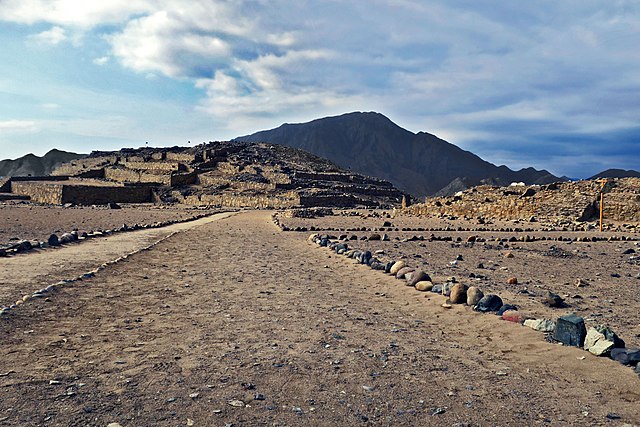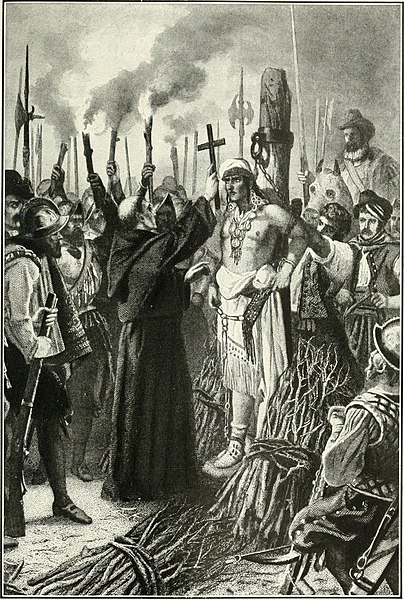Caral–Supe was a complex Pre-Columbian era society that included as many as thirty major population centers in what is now the Caral region of north-central coastal Peru. The civilization flourished between the fourth and second millennia BC, with the formation of the first city generally dated to around 3500 BC, at Huaricanga, in the Fortaleza area. From 3100 BC onward that large-scale human settlement and communal construction become clearly apparent, which lasted until a period of decline around 1800 BC. Since the early 21st century, it has been recognized as the oldest-known civilization in the Americas, and as one of the six sites where civilization separately originated in the ancient world.
Reconstruction of one of the pyramids of Aspero
Remains of platform mound structures at Caral
Caral panorama
The people from the Caral–Supe civilization used vertebrae of the blue whale as stools
Peru, officially the Republic of Peru, is a country in western South America. It is bordered in the north by Ecuador and Colombia, in the east by Brazil, in the southeast by Bolivia, in the south by Chile, and in the south and west by the Pacific Ocean. Peru is a megadiverse country with habitats ranging from the arid plains of the Pacific coastal region in the west to the peaks of the Andes mountains extending from the north to the southeast of the country to the tropical Amazon basin rainforest in the east with the Amazon River. Peru has a population of over 32 million, and its capital and largest city is Lima. At 1,285,216 km2, Peru is the 19th largest country in the world, and the third largest in South America.
Remains of a Caral/Norte Chico pyramid in the arid Supe Valley
Moche earrings depicting warriors, made of turquoise and gold (1–800 CE)
The citadel of Machu Picchu, an iconic symbol of pre-Columbian Peru
One of the main events in the conquest of Peru was the death of Atahualpa, the last Sapa Inca, executed by the Spaniards on 29 August 1533








